Sepahsalar Mosque: A Persian Architectural Masterpiece
Sepahsalar Mosque, now known as Ayatollah Motahari Mosque, stands as one of Tehran's most iconic historical and architectural landmarks.
Located on Baharestan Street, near the old National Assembly building, this grand mosque and its adjoining school are among the largest and oldest in the city. Commissioned in 1879 by Mirza Hossein Khan Sepahsalar, the Chancellor of Naser al-Din Shah Qajar, the mosque blends Iranian architectural heritage with Ottoman influences, making it a unique marvel in Tehran. Its ornate brickwork, intricate tile designs, and towering minarets attract visitors and scholars alike, while the dome’s remarkable elegance exemplifies the mastery of Qajar-era architecture. Though public access is limited, Sepahsalar Mosque in Tehran remains a symbol of religious and cultural heritage.
Sepahsalar Mosque History

Sepahsalar Mosque, commissioned by Mirza Hossein Khan Sepahsalar, the Chancellor of Naser al-Din Shah Qajar, began construction in 1879. Sepahsalar envisioned the mosque as a grand religious and educational center in Tehran. Sadly, he passed away in 1881, before its completion. The responsibility for finishing the project was passed on to his brother, Yahya Khan Moshir al-Doleh, who oversaw the mosque’s completion within five years.
The architectural design was led by Mirza Mehdi Khan Shaghaghi, known as Mumthan al-Dawlah, who had studied in France, and the main architect, Hasan Memar Qomi. Later contributions from master architects like Haj Abulhasan Memar and Ustad Jafar Khan Memarbashi Kashani further enhanced the building’s intricate design, particularly in the decorations and interior details.
Sepahsalar Mosque Architectural Design
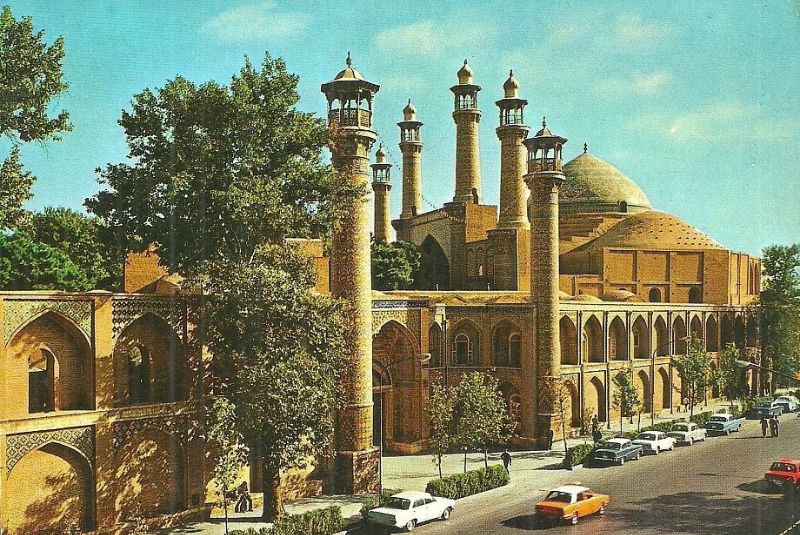
Sepahsalar Mosque is a masterpiece of Iranian-Islamic architecture, blending traditional Persian designs with elements inspired by Istanbul's iconic mosques. The mosque’s layout and design draw inspiration from renowned structures like Isfahan’s Jame Mosque, Chaharbagh School, and the Hagia Sophia in Istanbul, creating a unique fusion of architectural styles.
The building is primarily constructed from brick, with the intricate use of colorful clay tiles that add vibrancy to its exteriors and interiors. The dome and arches are adorned with beautiful tilework, while wooden elements, such as the intricately carved doors, add a touch of elegance. Metalwork, notably in the minarets and some entrances, provides additional structural strength and decorative appeal. These materials collectively create an aesthetic that is both grand and harmonious.
Sepahsalar Mosque Architectural Features
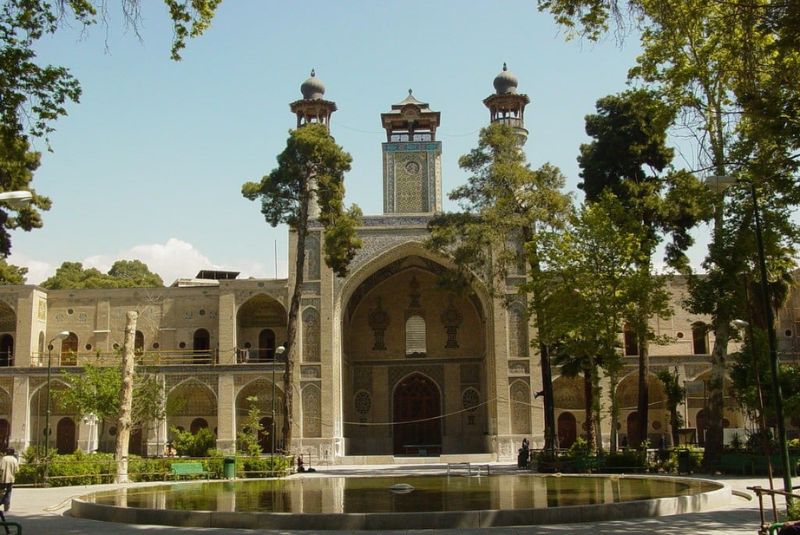
Dome and Minarets: One of the most innovative aspects of Sepahsalar Mosque is its design, featuring eight towering minarets, a rarity in Iranian mosque architecture. The tallest minaret reaches 37 meters, while the dome, a symbol of the mosque, measures 25 meters in height. The structure showcases traditional Persian engineering with a modern flair, creating a visually stunning skyline.
Courtyards: The mosque includes both a central and side courtyard. The central courtyard, following a four-iwan layout, measures 62x63 meters, with two floors of student living quarters surrounding it. The side yard, smaller in size, offers a quiet, residential area for the viceroy and also has Shahneshin.
Summer and Winter Shabestan: The grand summer shabestan, or gonbadkhane, features a large domed roof supported by four pillars, providing an airy, column-free view. The winter shabestan, known for its 44 stone pillars, offers a more enclosed, warm environment with intricate moqrans and plasterwork.
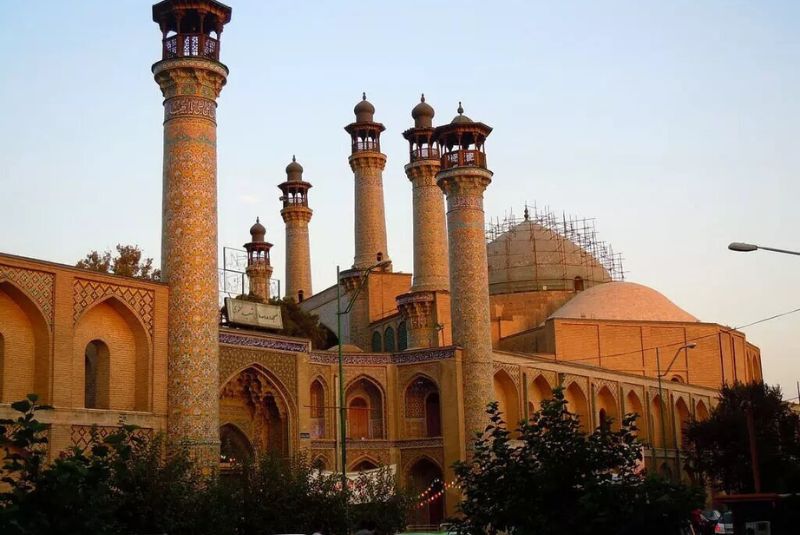
Porches and Decorative Features: The mosque is surrounded by four grand porches, the southern being the largest. The decorative elements include vibrant tile work, intricate plaster, beautifully carved woodwork, and elegant metal craftsmanship. The use of colorful tiles, especially in the floral and bird patterns, adds a layer of artistic depth to the mosque.
Chehl Shir Hall: Located in the northwest corner of the mosque, the Chehl Shir Hall features a central ablution basin surrounded by forty valves (shirs). Its eight stone pillars are elegantly designed, creating a serene space for ablution and reflection.
Classrooms and Lecture Halls: Sepahsalar Mosque was also an educational institution, with multiple classrooms surrounding the main prayer hall. These spaces were used for religious instruction, sermons, and lectures, with one classroom behind the northern iwan now functioning as the Darul-Qur’an, a center for Quranic studies.
Decorative Elements of the Sepahsalar Mosque
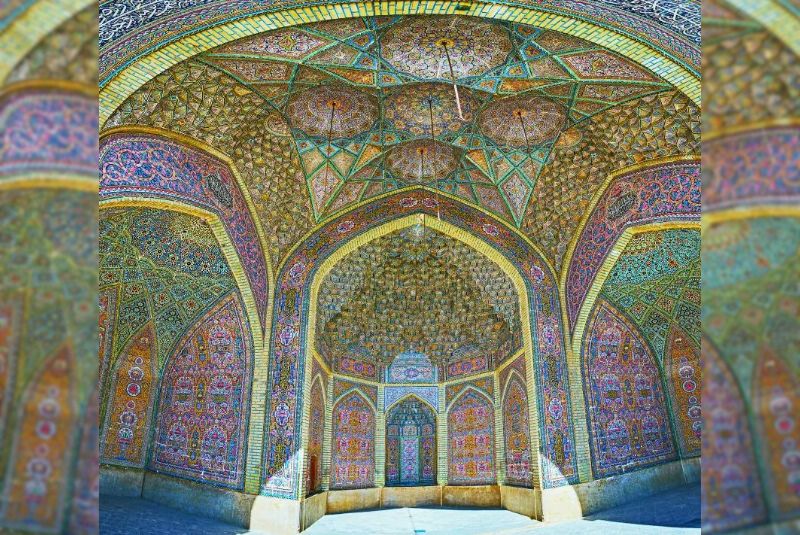
Intricate Knotwork (Girih) and Colorful Tiling: One of the most striking aspects of Sepahsalar Mosque's design is its intricate Girih (geometric knotwork), particularly evident in the wooden doors and windows. The colorful tiling, characterized by floral motifs and vibrant shades, adorns various parts of the mosque, creating a lively atmosphere. Unlike many Qajar-era mosques, the use of brick for decoration is minimal, with most of the visual appeal coming from the beautifully crafted tiles.
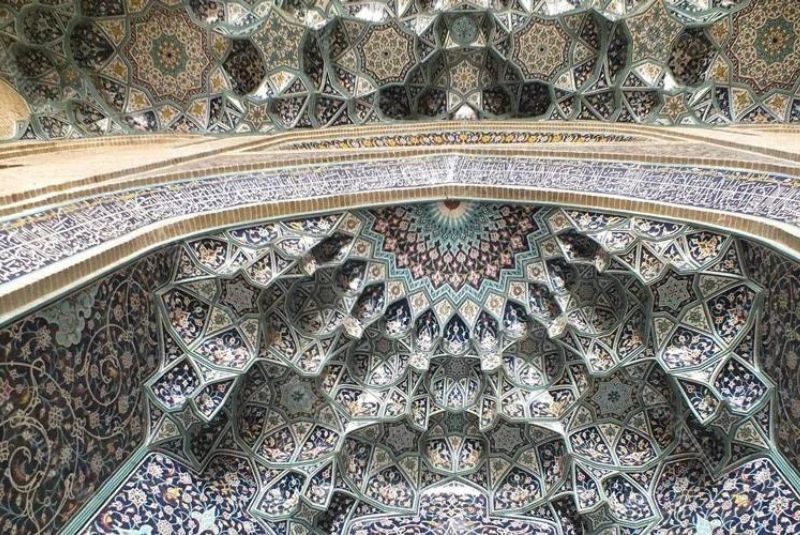
Influences of Frangi Kari: The mosque’s decoration incorporates Frangi Kari—Western-inspired patterns such as plucked lily flowers—blended with traditional Iranian motifs like Slimi (arabesques). This fusion adds a distinctive character to the mosque, reflecting the architectural trends of the late 19th century as Iran opened up to Western influences.
Challenges with Stone Durability: While stone is sparsely used for decoration, its inclusion, particularly in carvings, presented challenges. The lack of technical knowledge about stone layers led to deterioration in some sections. Vertical veins in stone allowed water penetration, causing damage over time, while horizontal-veined carvings remain in better condition.

Wooden and Metal Features: The mosque’s wooden elements, especially the doors, are noteworthy for their complex Girih patterns. These wooden designs, especially in the winter shabestan and the doors of the cells, demonstrate exceptional craftsmanship. The metal decorations, such as wrought iron grills behind the windows and metalwork in the western entrance door, add an elegant touch, enhancing both the functionality and beauty of the mosque’s architecture.
Sepahsalar Mosque Current Status
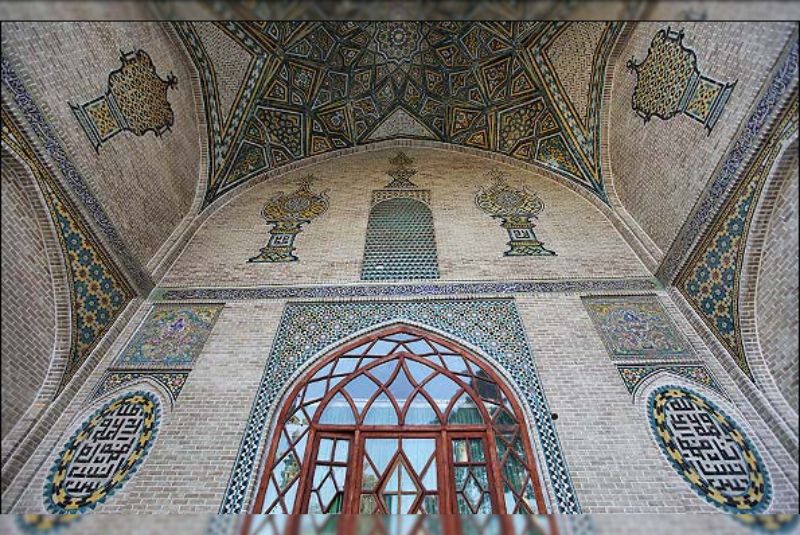
Public Access and Visiting Conditions: Sepahsalar Mosque, now known as Ayatollah Motahari Mosque, is not regularly open to the general public for daily visits. However, it can be accessed during special events, such as religious ceremonies, funeral services, and commemorations of prominent personalities. Due to its architectural and historical significance, visits to the mosque can sometimes be arranged by appointment, particularly for educational or scholarly purposes.
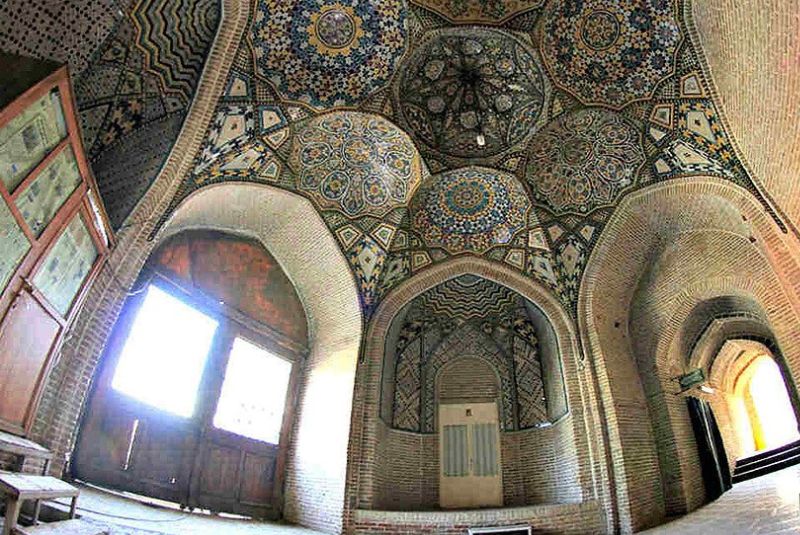
Practical Information for Visitors: Those wishing to visit Sepahsalar Mosque should check local listings or contact relevant authorities in advance for access details. The Sepahsalar Mosque Location is on Baharestan Street, and the nearest metro station is Baharestan, accessible via Tehran's Metro Line 2. Visitors should note that, like many historic sites in Tehran, appropriate dress and respect for religious practices are required when entering the premises.
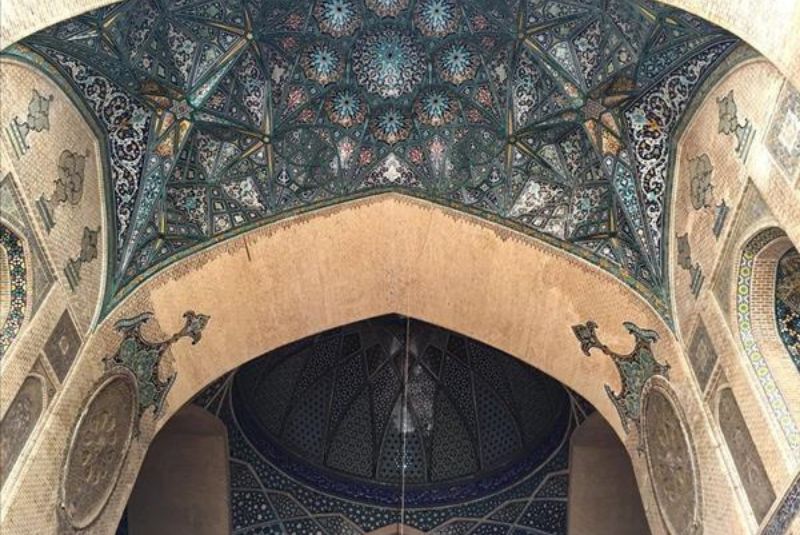
Finally!
Sepahsalar Mosque, a masterpiece of Iranian-Islamic architecture, stands as a testament to the rich cultural and historical heritage of Tehran. Built under the guidance of Mirza Hossein Khan Sepahsalar and completed with the efforts of distinguished architects, it uniquely blends traditional Iranian designs with influences from Istanbul’s mosques. From its intricate tile work and domes to its elegant courtyards and shabestans, the mosque showcases an unparalleled fusion of artistry and architecture. Though public access is limited, Sepahsalar Mosque remains an iconic symbol of Tehran’s architectural evolution during the Qajar era. Its historical significance and stunning design continue to inspire admiration and respect for Iran's rich cultural legacy.
Share your story!
Comment below and let us know about your Experience.
Your story inspires others!


Comment
Leave a Comment